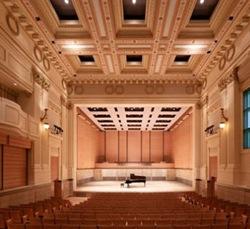'Tis the Season of Season Announcements
After recent reports in Music News about summer programs for Cabrillo, Music@Menlo and BBC Proms, S.F. Contemporary Music Players, and Festival del Sole, and after stories about the 2011-2012 seasons for the San Francisco Symphony centennial and Cal Performances, here are a couple of more from a flood of announcements for fall and beyond.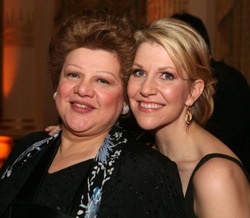
San Francisco Performances
It's Season No. 32 for San Francisco Performances, featuring pianist Leif Ove Andsnes, in solo recital as well as with Matthias Goerne; soprano Karita Mattila in her recital debut here; the Parisian Ébène Quartet; pianist/composer Marc-André Hamelin; Lera Auerbach with cellist Alisa Weilerstein and soprano Lina Tetriani.
The Alexander String Quartet celebrates its 30th anniversary with a commission: Jake Heggie's vocal quintet for the ASQ and Joyce DiDonato. Mezzo-soprano Stephanie Blythe and pianist Warren Jones present an all-American program — Blythe is this season’s Fricka in the Metropolitan Opera’s productions of Das Rheingold and Die Walküre. Baritone Simon Keenlyside and pianist Malcolm Martineau perform Mahler, Strauss, and Debussy.
SFP presentations include Ute Lemper and the Vogler Quartet performing music in 1920s-Europe fusion; Indian classical dancer Shantala Shivalingappa; new commissions for the Brentano String Quartet; mandolinist Chris Thile's solo program featuring Bach; and Israel's Batsheva Dance Company.
Oakland East Bay Symphony
Music Director Michael Morgan has announced the Oakland East Bay Symphony's 2011-2012 season, including a world premiere by Taylor Eigsti; a number of American works; Orff's Carmina Burana;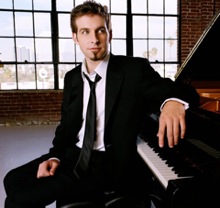
Guest artists participating in the Paramount Theatre season are Eigsti, Daniel Bernard Roumain, Paula West, David Requiro, Andrew Sords, Sara Davis Buechner, and William Harvey.
Morgan describes the season as one with "a lot of star power and youthful energy throughout. From Sara Davis Buechner through the trio of jazz greats in the season finale we're having another colorful year and this year we're embracing the Filipino community as we have the Persian, Armenian and others before. Binding our community through the art of music remains a central focus for us."
One program features works by Czech composer and pianist Erwin Schulhoff, who died in the Wülzburg concentration camp, and was one of the first classical composers in Europe to be inspired by jazz, and by the Pole Mieczyslaw Weinberg, who lost most of his family in the Holocaust and fled the German occupation, only to fall victim to Stalin's postwar campaign against Jews.
Weinberg was released after years of imprisonment, and later created what is considered one of the finest trumpet concertos. OEBS Principal Trumpet William Harvey is the featured soloist.
Flicka's Dog-and-Pony Show ... With Exceptional Humans, plus Hannah
P.T. Barnum advised performers never to appear on stage with children or animals, recalls James Meredith,
Photo by Terrence McCarthy
And yet, Meredith reports that Frederica von Stade and composer/pianist Jake Heggie completely ignored the old saw on Sunday in the Herbst Theatre at a San Francisco Performances family matinee.
Flicka and Heggie dissed Barnum by featuring four teenage singers from YMP (an organization long supported by the mezzo) and — wait for it! — a d-o-g.
To call Hannah a "dog" is not telling the full story. She is a white West Highland terrier, named after Hanna Glawari, a character Flicka often played in Franz Lehár's Merry Widow. (Look for an explanation of the extra "h" in the next edition of Music News; time is needed for research.)
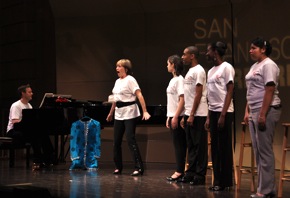
Hannah was the star of the riotous closing number, Aaron Copland's setting of the American folk song "I Bought Me a Cat," aptly edited to "I Bought Me a Dog." Each of the singers made appropriate animal noises as ducks, geese, pigs, horses, and wives were "bought." Hannah showed her stage chops by spontaneously standing up when the audience wildly applauded.
Flicka and Heggie put the program together just right for a family audience. Flicka sang most of the music, and each of the four young singers sang a solo, then took turns in the Rossini Duet for Two Cats with Flicka — Hannah looking on bemusedly.
The singers were mezzo Thérese Chaix (17), baritone Adam Green (18), soprano Christabel Nunoo (17), and soprano Priscillia Alva (12), all vocal students of YMP faculty member Meredith. They were chosen from a master class Heggie gave last month for 13 YMP singers performing his songs.
Here's What You Might Have Heard Around 4 a.m. Friday
Apologies if you came to this column hoping to escape The Royal Wedding. There is no place to hide.Paul Mealor, whose music was sung at the wedding of Prince William and Kate Middleton, reflects on his commission in The Guardian:
My new piece, Ubi Caritas for the Royal Wedding, takes its text from the sixth century Christian hymn that was normally sung at the service for the washing of the feet on Maundy Thursday. The words, originally in Latin, mean: "Where charity and love are, God is there. Let us come together in God's love and let us love each other with a sincere heart."The meaning of the words, in my mind, is two-fold: firstly, a prayer about love and, secondly, about service. After all, Jesus came to serve, and the young couple are about to enter a long period of service to the nation. I wanted to capture these two themes in my piece.
The composition is for choir and is gentle, delicate and meditative. The ancient, sixth century plainchant of Ubi Caritas is blended with 21st century harmony to create a work that, I hope, is both new and reflective of the past.
This commission came as a complete surprise to me (a letter, completely out of the blue in December saying that the royal couple had heard and enjoyed my music and wanted to include it in the ceremony). I almost fell over when I heard the news.
This is the biggest gig of any composer's life and I am really touched that the couple have chosen me. I only hope that my work can fulfil their wish for a piece that offers meditation and quiet contemplation amongst all the pomp and celebrations.
Ambiguities of Love in the West Bay
West Bay Opera General Director José Luis Moscovich muses over his unusual selection for the company's season-closing double bill of Henry Purcell's Dido and Aeneas and Manuel de Falla's La vida breve, May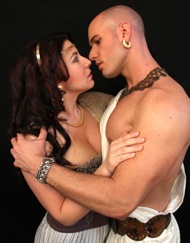
Photo by Otak Jump
These are two works about passionate love that ends in disappointment and death. Not a foreign concept to most mortals, though death is admittedly a bit extreme, but this is opera after all, and the treatment of the topic is so effective, in both cases, that we can easily suspend disbelief.Moscovich, who conducts the two operas, is quite right about the price: WBO, a thoroughly professional — and delightful — organization, has never followed its larger colleagues into stratospheric ticket pricing.The really interesting thing about both stories is that they provide a good deal of ambiguity about the relationships. Though a quick read yields the usual take where the man is the bad guy, getting what he wants and bolting, there's a lot more to both stories. Aeneas really falls in love with Dido. The witches trick him into leaving her. After Dido kills herself, Aeneas does go to Hades and finds her. He explains it wasn't his fault. Knowing what she now knows, does she forgive him? We'll see.
In La vida breve, Paco, a rich kid from the right side of the tracks, has been courting Salud, a 16-year-old girl in Granada's dirt-poor Gypsy ghetto. But it's not all flowers and serenades. She has been meeting him secretly and they've been having a torrid affair. Is he just using her? Or is he really in love with two women, unable to make up his mind? Or is he captured by convention and a rigid sense of social propriety, and immature enough not to be able to admit it? Is she the victim, or the very embodiment of temptation? It will all be revealed onstage, for a very reasonable price.
The stage director is Ragnar Conde, a young Mexican selected for this summer's Merola program.
The singers are: Cathleen Candia (Dido/Salud), Zachary Gordin (Aeneas/Cantaor), Shawnette Sulker (Belinda), Carla López-Speziale (Sorceress/La abuela), Pedro Betancourt (First Sailor/Paco), Carlos Aguilar (El tío Sarvaor), Emmanuel Franco (Manuel), Jacqueline Goldgorin (Second Woman), Kristen Choi (First Witch), Alexandra Mena (Second Witch/Carmela), and James Stahlman (Voz de la fragua).
Set design is by Jean François Revon, with costumes by Abra Berman. In collaboration with Flamenco de Stanford's dancer/choreographers Julia Schmidt, Javier Fresquez, and Rose Leitner.
Handel's Beasts: Explained, Illustrated, Complete with Musick
Donna Leon, author of the Commissario Guido Brunetti series, about crime in Venice, is a big opera fan,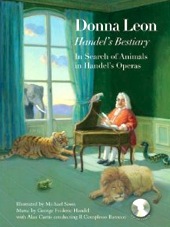
In Leon's newly published Handel's Bestiary, she traces 12 of the composer’s animal references through history, mythology, and the specific arias featuring them.
Illustrated by German painter Michael Sowa, the book also includes a CD of the arias, recorded by Alan Curtis and Il Complesso Barocco. Take a listen to "Qual leon che fere irato," from Arianna in Creta, with Ann Hallenberg, or the aria "Oh, that I on wings could rise," from Theodora, with Karina Gauvin.
Sowa has a special affinity for depicting the animal kingdom; his works include Sowa's Ark: An Enchanted Bestiary and A Bear Called Sunday.
More of MTT's Mahler Month of May
Michael Tilson Thomas, who will lead the San Francisco Symphony's Mahler Festival beginning this week and then take the orchestra to the heart of the extraordinary Mahler celebrations in Vienna, ended April and began May with ... Mahler.Leading his New World Symphony in its spectacular new Miami home, MTT received high praise:
Tilson Thomas, who won a 2003 Grammy award for his recording of the work with the San Francisco Symphony, ranks among the world's greatest living interpreters of Mahler. The Saturday performance has been sold out for weeks. Thirteen of the orchestra's alumnae returned to participate, including current members of the orchestras of Chicago, Cleveland, Philadelphia and San Francisco.Mahler's symphonies are tortuously difficult works, scored for large forces and bristling with exposed solos for winds and brass. Under Tilson Thomas' baton, the combined forces played magnificently, delivering an almost flawless performance. When it was over, the normally energetic conductor looked exhausted, obviously satisfied with the performance of the orchestra but worn out by the effort.
The Sixth Symphony, titled "the Tragic" by Mahler, does not make for a sunny evening at the concert hall. Less popular than most of the composer's other symphonies, the Sixth has the most chilling finale of any symphony in the regular repertoire.
Tilson Thomas' approach was neither excessively monumental nor overly emotional. The opening march was brisk and straightforward, with the conductor electing only later to make it more grim and hard-driven. In the Scherzo he found a sardonic humor that escapes many conductors, with little passages in the woodwinds and horns that show whiffs of the Eastern European side of Mahler's musical personality.
They Come to Play, Again
A couple of years ago, the fifth International Piano Competition for Outstanding Amateurs, by the Van Cliburn Foundation, and the documentary about it, They Came to Play, created quite a stir.Not only was it a remarkable musical event, but also drama, comedy, and "real life" all rolled into one. Well, here they come again, these remarkable amateurs who can put some professionals to shame with their determination and incredibly hard work.
The competition will be held in Fort Worth, May 23-29, with portions to be heard live on WRR 101.1 FM. The contest is open to pianists age 35 and older who do not derive their principal source of income through piano performance or instruction. Over the course of the week, they compete in three elimination rounds, have opportunities to explore chamber music works with professional musicians, and participate in symposia.
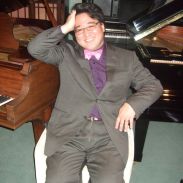
This year's competition brings together a diverse group of 74, ranging in age from 35 to 79, representing 18 nationalities.
The jury includes John Giordano, music director, Corpus Christi Symphony Orchestra; Gregory Allen, professor of piano, University of Texas at Austin; Shields-Collins Bray, principal keyboardist, Fort Worth Symphony Orchestra; Richard Dyer Boston Globe music critic (retired); and Jon Nakamatsu, Gold Medal winner at the Tenth Van Cliburn International Piano Competition (1997).
There is also a press jury, including Doug McLennan, founder and editor of ArtsJournal.com, along with music critics from the Dallas Morning News, Boston Globe, Washington Post, Philadelphia Inquirer, and Los Angeles Times.
Among Bay Area competitors: Ken Iisaka, Mill Valley (and occasional Classical Voice contributor); Yvonne Liu, Foster City; Esfir Ross, Oakland; and Mari Shiokawa, San Francisco.
Picasso-Stein-Thomson Link Occasions Tommasini Visit
This is just a tad complicated, so stay with us. Pablo Picasso will have his day(s) in San Francisco, with
- Seeing Gertrude Stein: Five Stories, from the Smithsonian, May 12-Sept. 6, in the Contemporary Jewish Museum
- The Steins Collect: Matisse, Picasso, and the Parisian Avant-Garde, May 21-Sept. 6, in SF MoMA
- Picasso: Masterpieces From the Musée National Picasso, Paris, June 11-Oct. 9, in the de Young Museum
Among other music-and-Picasso-related events, Anthony Tommasini, chief classical music critic for the New York Times, will present a talk with performance excerpts on Four Saints in Three Acts, by Virgil Thomson and Picasso-pal Gertrude Stein. See? It wasn't that difficult to connect the dots.
Members of an organization new to me (but probably well-known otherwise), Bay Area Rainbow Symphony (BARS) will also perform some of Thomson's musical portraits with words by Stein, and music by Erik Satie. The Contemporary Jewish Museum event is scheduled for 7 p.m. on June 16.
Conservatory's Wasted Treasures
Lately, the San Francisco Conservatory of Music is doing a better job at spreading information about public events at the school, and Music News is certainly doing its best to report on free or low-cost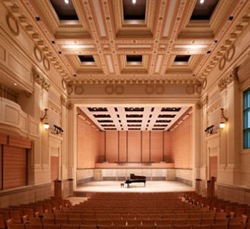
On Monday afternoon, Toronto Symphony Music Director Peter Oundjian led a free orchestral workshop, conducting the outstanding Conservatory Orchestra in Elgar's Enigma Variations ... before an empty hall. Let's be precise: There were about 40 people scattered around the 450-seat Carone H. Hume Concert Hall. Yes, empty.
Such a shame! Oundjian is an outstanding conductor/educator, whose comments were as instructive and entertaining to listeners as they were to the musicians, but few took advantage of the opportunity.
Music lovers should grab the chance to hear the Conservatory Orchestra, no matter what the occasion. There are numerous players you should hear now, in an affordable venue, not wait until they'll play with great orchestras at premium prices. Concertmaster Ravenna Lipchik; cellists Ari Bocian, Laura Gaynon, Elizabeth Grunin, and Chloe Jang; oboists Joan Oh and Mandy Tsai; Jeanie Psomas and Da Tang on the clarinet; bassoonists Brandon Telezinski and Bruce Yang; and many more: Hear them now.
With commencement coming up on May 20, better hurry over to 50 Oak Street and check out what's happening. And also make a note now for September when the fall semester information is released.
As for now, don't look for faculty members Jean-Michel Fonteneau, Axel Strauss, Wei He, Yoshikazu Nagai, Ian Swensen, David Conte, and Mark Sokol. They are in China, representing the Conservatory at "Shanghai Spring," one of China's largest music events, May 8-12. Next year, the festival will take place in San Francisco, supported by a grant from the Cha Foundation of Hong Kong.
Musae Into 'Blue Skies and Bluegrass'
Women's Vocal Ensemble Musae, an even dozen chosen from among the best voices around, presents "Blue Skies, Bluegrass, and Beyond" May 20 in Berkeley's St. Mark's Episcopal Church and May 22 in St. Mark's Lutheran Church in San Francisco.That would be bluegrass, predictably, but also classic rock, Appalachian gospel hymns, madrigals, part songs, and contemporary chansons — giving "eclectic" a good name.
Examples: Cornysh's "Ah, Robyn," Lauridsen's "Dirait-on," Delibes' "Flower Duet" from Lakmé, Stanford's "The Blue Bird," and Nick Benavides' "A bird came down the walk." For starters.
Gockley's Longevity Record Is Not in Jeopardy
San Francisco Opera General Director David Gockley spent 33 years (1972-2005) at the head of Houston Grand Opera before coming here in 2006. His successor, Anthony Freud, is calling it quits in Houston after only five years, even though his contract runs through 2015.The reason: the call of Chicago and the Lyric Opera there, to succeed General Director William Mason, who is leaving at the end of the next season.
The Lyric is the third most prominent opera company in the U.S., after New York's Metropolitan Opera and the San Francisco Opera. HGO is usually ranked among the half-dozen or so most important U.S. companies — but with its six-opera subscription series, it produces far fewer productions each year than the Met, and fewer than SFO and the Lyric.
From the New Mexico Symphony Music Director
Dear friends, Please forgive the mass e-mail, but this subject is very painful and I'd rather not have to write about it over and over. It is with a very heavy heart that I tell you the worst has come to pass here in New Mexico, as the Board of Trustees voted last night to file for Chapter 7 bankruptcy and dissolve the NMSO, which totally ceases to exist just as we were about to celebrate out 80th anniversary.Orchestra musicians, staff, management and conductors, we are all suddenly without a job. What's worse, the ramifications will be many, as our musicians are so deeply integrated in the fabric of the community as teachers in the public and private schools, at UNM [University of New Mexico] and other colleges, as the majority of the Santa Fe Symphony and in many other ways. In other words, the entire music life of the state has been totally thrown into disarray, as very likely many will leave or move into other fields out of necessity. This is not a hugely populated state and the musicians fill many roles, but the big anchor that made it all possible was the NMSO. Without it I fear a lot of music and music education will disappear.
This is a long and complicated story, with plenty of blame to spread around. Perhaps someday I'll share with some of you my take on the whole thing. I better not say anything now as I'm bound to say exactly the wrong thing about the wrong people!
Now many of us have no idea what the future will bring, or how we will survive. It is especially hard on the kids. I know mine are very affected, and trying very hard to deal with this without freaking out. Somehow or other we'll make it and different opportunities will arise, I'm sure.
All the best,
Guillermo [Figueroa]
Met HD Sensation: Il Trovatore
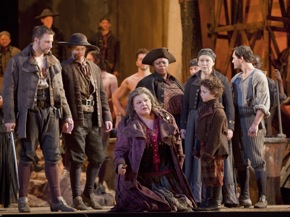 Every time you think you've heard this exciting, melody-filled Verdi enough, you experience it in a good performance, and it's all fresh and good again. Such was the case Saturday morning, at the Metropolitan's Live in HD transmission — an excellent cast, pretty good conducting (Marco Armiliato), and straightforward direction from David McVicar.
Every time you think you've heard this exciting, melody-filled Verdi enough, you experience it in a good performance, and it's all fresh and good again. Such was the case Saturday morning, at the Metropolitan's Live in HD transmission — an excellent cast, pretty good conducting (Marco Armiliato), and straightforward direction from David McVicar.
We have the director to thank for overcoming the single problem with Il trovatore: so many breaks between the scenes, usually meaning sitting back, continuity interrupted while stagehands are racing around behind the curtain. None of that in McVicar's presentation. With scenes shifting seamlessly on the stage turntable, the show went on and on, pausing only for the intermission.
Sondra Radvanovsky's Leonora, Marcelo Álvarez's Manrico, and Dmitri Hvorostovsky's Count di Luna were all first class, and then there was Dolora Zajick's Azucena. For anyone who was at Zajick's landmark Azucena in the War Memorial Opera House in 1994, the amazing thing is that after all these years, the voice is just as powerful, the performance show-stopping.
And thank heaven for big favors: after Peter Sellars' direction of the last HD telecast for the Adams opera Nixon in China, with disturbingly extreme close-ups, this telecast went back to normal distance, enabling the viewer to suspend the disbelief of pores-in-your-eye.

